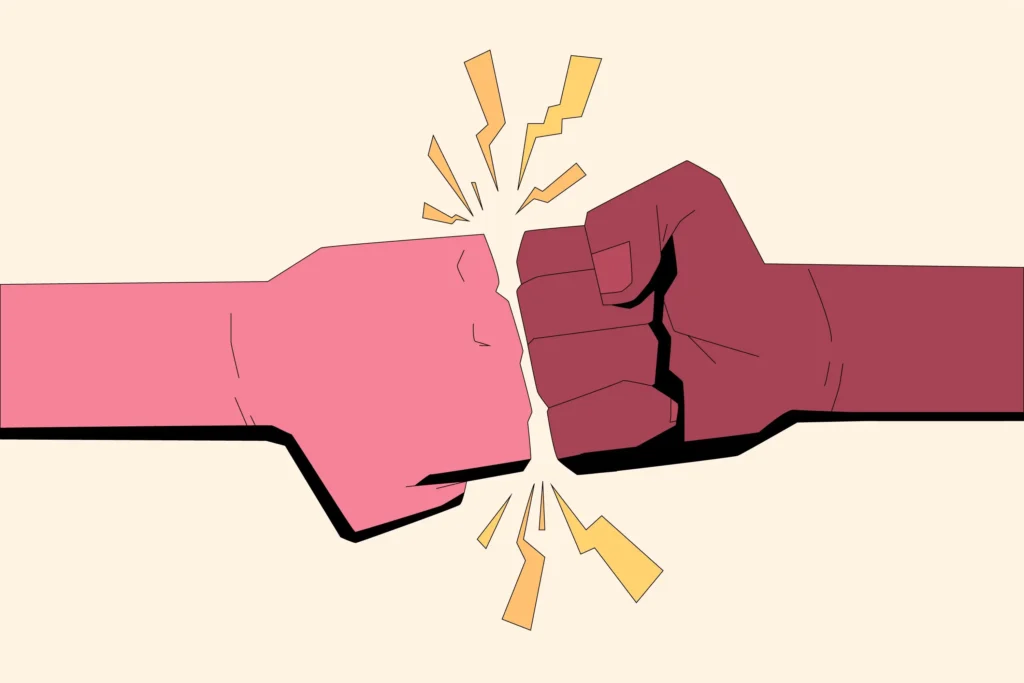Conversion Rate vs Click Through Rate vs Bounce Rate: What’s the Difference?
In digital marketing, Conversion Rate (CR), Click Through Rate (CTR), and Bounce Rate (BR) are vital metrics for evaluating campaign success. CR shows the percentage of users completing a desired action. CTR measures the percentage of users clicking on a link. BR indicates the percentage of users leaving a site after one page. Optimizing these metrics is key to enhancing campaign performance and ROI.
Key Takeaways:
- Conversion Rate (CR): Measures % of visitors who take a desired action (purchase, signup) on your website. Shows how effective your site is at converting visitors into customers.
- Click-Through Rate (CTR): Measures % of people who click on your ad (compared to those who see it). Indicates how well your ad grabs attention and gets clicks.
- Bounce Rate (BR): Measures % of visitors who leave your site after viewing only one page. Shows visitor satisfaction with your website content.
- CR vs. CTR vs. BR: CR looks at conversions on your site, CTR looks at ad clicks, and BR looks at visitor satisfaction with a single page. All three together tell the story of how users interact with your marketing efforts.
Table of Contents
Conversion Rate (CR)
Conversion Rate (CR) is a key metric in digital marketing that measures the percentage of users who complete a desired action, such as making a purchase, filling out a form, or subscribing to a service. It indicates the effectiveness of a website or campaign in converting visitors into customers or leads.
The formula for calculating Conversion Rate (CR) is:
Conversion Rate = (Number of Conversions / Total number of visitors) * 100
Several factors can affect CR, including website design, user experience, call-to-action effectiveness, and targeting. To improve CR, businesses can optimize landing pages, streamline the checkout process, use compelling call-to-action buttons, and target the right audience with personalized messages.
For example, a well-designed e-commerce website with clear product descriptions, easy navigation, and a seamless checkout process may have a high CR. In contrast, a website with a confusing layout, lengthy responsive forms, and unclear instructions may experience a low CR.
Understanding and optimizing Conversion Rate is essential for businesses to maximize the return on their marketing efforts and drive more conversions.
Click Trough Rate (CTR)
The Click Through Rate (CTR) serves as a crucial metric for evaluating the performance of online advertising efforts. It represents the percentage of people who click on an advertisement or a link compared to the total number of people who view the ad. CTR is crucial in assessing the relevance and performance of ads, as a higher CTR indicates that the ad is resonating with the audience.
The formula for calculating Click Through Rate (CTR) is:
CTR = Clicks / Impressions x 100%
Several factors can influence CTR, including ad placement, ad copy, targeting, and relevance to the audience. To increase CTR, advertisers can use compelling ad copy, relevant keywords, eye-catching visuals, and targeted audience segmentation.
CTR can vary across different digital marketing channels. For example, email marketing typically has higher CTRs compared to display advertising. Social media ads often have moderate CTRs, while search engine ads tend to have lower but more targeted CTRs.
Monitoring and optimizing CTR is essential for maximizing the effectiveness of online advertising campaigns and improving overall ROI.
Bounce Rate (BR)
Bounce Rate (BR) is a metric that measures the percentage of visitors who navigate away from a website after viewing only one page, without taking any further action. A high bounce rate can indicate that visitors are not finding the content engaging or relevant, which can impact the overall performance of a website.
The formula for calculating Bounce Rate (BR) is:
Bounce Rate = Single-Page Sessions / Total Sessions x 100%
There are several reasons why a website may have a high bounce rate, including slow page load times, irrelevant content, poor website design, or a lack of clear calls-to-action. To reduce bounce rates, website owners can improve page load speeds, optimize content for relevance and readability, enhance website navigation, and use compelling calls-to-action.
The Bounce Rate can fluctuate based on the specific nature of the website. For example, blogs may have higher bounce rates as visitors often come to read a specific article and then leave. E-commerce sites, on the other hand, may have lower bounce rates as visitors are more likely to browse multiple pages in search of products.
Monitoring and reducing Bounce Rate is important for improving user engagement, increasing conversions, and enhancing overall website performance.
Comparison of CR, CTR, and BR in Digital Marketing
Conversion Rate (CR), Click Through Rate (CTR), and Bounce Rate (BR) are three essential metrics used to measure the effectiveness of digital marketing campaigns, but they each serve different purposes and provide unique insights.
These metrics complement each other in evaluating the overall performance of a digital marketing campaign. For example, a high CTR indicates that an ad is generating interest and driving traffic to a website, but if the CR is low, it suggests that the website may not be effectively converting that traffic into customers. Similarly, a high BR can indicate that visitors are not engaging with the content, which may be impacting both CTR and CR.
In some cases, these metrics can be interrelated. For example, a low CTR on an ad may lead to a higher bounce rate on the landing page if visitors are not finding what they expected. Conversely, a high CTR followed by a low bounce rate and a high CR indicates that the campaign is effectively targeting the right audience and delivering relevant content.
Overall, CR, CTR, and BR are valuable metrics for measuring the success of digital marketing campaigns, and understanding how they relate to each other can help marketers optimize their strategies for better results.
Best Practices for Improving CR, CTR, and BR
1. Optimize Your Website for Conversions
- Incorporate clear and compelling call-to-action (CTA) buttons to enhance user engagement.
- Streamline the checkout process for e-commerce websites to improve user experience.
- Ensure your website is mobile-friendly.
2. Enhance Ad Relevance and Creativity
- Tailor ads to match the intent of your target audience.
- Use eye-catching visuals and compelling copy.
- Conduct A/B testing on various ad variations to determine the most effective resonating option.
3. Improve Landing Page Experience
- Ensure landing pages are relevant to the ad or link clicked.
- Provide valuable content and a clear value proposition.
- Optimize loading speed and user experience.
4. Reduce Bounce Rates
- Improve content quality and relevance.
- Enhance website navigation and user experience.
- Use internal linking to encourage exploration of your site.
5. Monitor and Analyze Metrics Continuously
- Use analytics tools (e.g., Google Analytics) to track CR, CTR, and BR.
- Set up goals and conversion tracking to measure effectiveness.
- Consistently analyze and refine your strategies based on insights derived from data.
6. Conduct A/B Testing
- Test different elements (e.g., headlines, CTAs, visuals) to optimize for conversions.
- Use data-driven insights to refine your campaigns and improve performance.
7. Implement Retargeting Strategies
- Target users who have shown interest but did not convert.
- Use personalized messaging to re-engage these users and encourage conversion.
8. Utilize CRM and Marketing Automation
- Utilize customer relationship management (CRM) tools to monitor and manage customer interactions.
- Implement marketing automation to deliver personalized content and offers.
Importance of Continuous Monitoring and Analysis
- Regular monitoring allows you to identify trends and make informed decisions.
- Analysis helps you understand customer behavior and preferences.
- It enables you to optimize campaigns for better performance and ROI.
Tools and Resources for Tracking and Analyzing
- Google Analytics: Tracks website traffic, conversions, and user behavior.
- Hotjar: Provides heatmaps and session recordings for website analysis.
- A/B Testing Tools: (e.g., Optimizely, VWO) for testing different variations of your website and ads.
- CRM and Marketing Automation Platforms: (e.g., HubSpot, Salesforce) for managing customer interactions and automating marketing processes.
Conclusion
Conversion Rate (CR), Click Through Rate (CTR), and Bounce Rate (BR) are pivotal metrics in evaluating the success of digital marketing campaigns. CR reflects the effectiveness of converting visitors into customers or leads, CTR indicates the engagement level of ads, and BR signifies visitor interaction with website content. Understanding and optimizing these metrics are essential for enhancing campaign performance and maximizing ROI. Continuous monitoring, analysis, and implementation of best practices can significantly improve these metrics, leading to more successful digital marketing campaigns.











